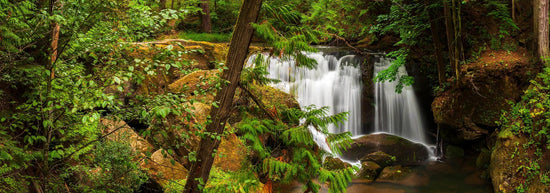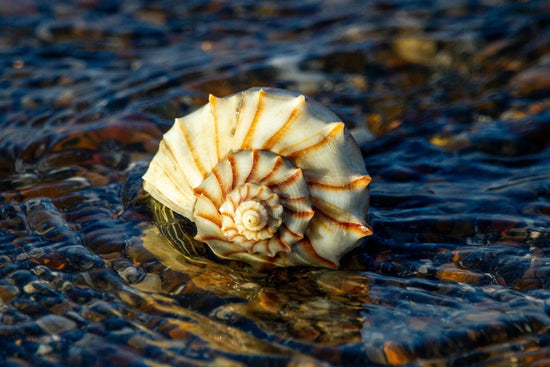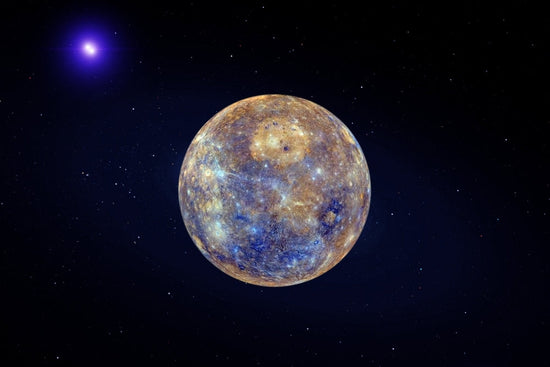Sea Witch Botanicals has always been more than business. We launched our brand in 2014 with a dream of giving back to the world in a meaningful way—to make a lasting positive impact not just on our planet, but on the people we share it with, too.
With a passion for soaps, aromatherapy, and environmental action, our founders set out on a mission to keep the world's water healthy by providing non-toxic home and body products that are good for our bodies as well as the environment.
Throughout our first decade, we pursued this mission at every turn: earning our certification as a B-Corp (Benefit Corporation) in 2018; becoming a contributing member of 1% for the Planet in 2019; always using plant and mineral-derived ingredients; never using synthetic fragrance oils or other harsh chemicals; managing our waste and opting for compostable or recyclable options as often as possible; and donating a meaningful portion of our profits each year to social and environmental good.
When we reached the milestone of our 10-year anniversary in 2024, we knew it was time to take our mission to the next level. That’s why we set a goal to work with our community to plant 10,000 trees—a veritable Sea Witch Forest—around our home in northwestern Washington. That way, the goodness of the Sea Witch would continue to grow long after we’re gone.
Little did we know at the time that in setting this goal, we had just launched ourselves headfirst into a partnership with an organization that would change the course of our business forever.
Let’s meet the Whatcom Million Trees Project.
In this article:
What Is the Whatcom Million Trees Project?

Based here in Bellingham, WA, the Whatcom Million Trees Project (WMTP) is a nonprofit organization working to plant, protect, and restore our local forests and woodland areas. Starting with an initial goal of planting 1,000,000 trees across our home in Whatcom county, their amazing conservation efforts have since expanded to include political advocacy as well as community engagement with hands-on restoration projects. Not only are they removing invasive species and planting native saplings—they’re also helping to safeguard existing mature trees and forested areas from logging, urban development, and other threats.
This project comes in recognition of the critical need for “conserving mature, diverse, naturally-regenerated forests” in the face of biodiversity loss within our rapidly changing climate. “Healthy, diverse forests—particularly in key locations such as Nooksack Watershed and Lake Whatcom Watershed—are our best defense to lessening now-common local floods, water quality issues, extreme heat domes, and potential fires,” WMTP explains.
Their work is guided by a three-pronged mission:
- Plant native seedlings where they are most needed
- Protect mature trees in key locations through political advocacy, invasive species removal, and community education
- Connect with each other and the land through hands-on learning and events.
Click here to learn more about their restoration projects here in northwestern Washington!
How Trees Support Healthy Ecosystems

Trees do a lot more for the environment than just sequestering carbon—their impact can be felt worldwide. All life on our planet is connected. Particularly in a time when ecological balance faces major threats from global warming and human development, here are a few more ways in which trees become some of our strongest allies:
- Clean air. Not only do trees provide deliciously oxygenated air for us to breathe, they also filter and absorb pollutants from the atmosphere, purifying the air we breathe.
- Filtered water. Forests can help prevent pollutants from entering our waterways by reducing runoff from storms and filtering cleaner water into underground stores. As it turns out, forests provide drinking water to over 150 million people in the US alone!
- Stabilized soil. Complex tree root systems can prevent soil erosion, creating steady riverbanks and hillsides that can withstand the elements and continue to provide habitat for animals.
- Cooler temperatures. Shade from trees can significantly reduce heat, providing respite for animals and people alike. Since concrete and pavement absorb so much heat, urban areas without trees create a greater risk of heat-related illness or death. Urban trees can literally save lives!
- Biodiversity. From canopy branches to riparian roots, trees of all sorts provide all sorts of homes or shelter for all sorts of animals, giving a wide variety of species a better chance at survival.
Whatcom Million Trees Project knows reforestation is only successful when planting the right trees in the right places. Their team sources native seedlings (including Douglas fir, Western red cedar, bigleaf maple, and others) and selects planting sites strategically so as to yield the best results.
Our Reforestation Project with the WMTP

Beginning in 2024, Sea Witch Botanicals has joined forces with WMTP on their project to reforest 12 acres of the Whatcom Humane Society’s Wildlife Rehabilitation Center. This project won’t just provide new native tree canopy—it’ll expand wildlife habitat space for the many animal species rehabbed on site.
While it will take multiple years to completely restore this former hay field, WMTP is proud to share that approximately one third of the site has been successfully planted as of early 2025. This includes “over 2,000 native tree seedlings plus hundreds of native understory plants in this future forest.” THIS is what we mean when we say that your support makes it all possible!
Sea Witch Botanicals donated a total of $15,500 to Whatcom Million Trees Project in 2024.
Get Involved: What You Can Do for Conservation
“Many of us are deeply concerned (and already affected) by the climate crisis. But here’s the reality: there are no easy solutions. Systemic changes in government policies, corporate/industry practices, lifestyle changes, and more are all needed to greatly reduce our carbon emissions. Planting new trees plus protecting hundreds of thousands of large, mature forest tree canopy to increase carbon sequestration is simply one piece of a multi-faceted approach. But it’s an important piece. And when well-conceived and ecologically-sound, it also provides numerous health and well-being benefits to all life.”
—Whatcom Million Trees Project

Community action starts with you. If you’re looking for a way to make a positive impact on the Earth, here are a few things everyone can do for conservation.
- Learn. The most important thing you can do for the Earth is to become familiar with her. Get to know the plants and animals in your area. Learn about the dynamics between native, non-native, and invasive species. Find out which Indigenous groups have traditionally managed the land where you live and learn how the landscape has informed their ways of life.
- Know the issues. Get clear on the threats to the environment in your area, what they’re caused by, and what you can do to help.
- Use your voice. As WMTP has shown us, conservation work cannot be done without political advocacy—and we all have a part to play. Sign petitions and contact your congresspeople when relevant issues come up. Find WMTP’s list of petitions here. You might also check out 5Calls, an app designed to make calling your representatives easy. Simply set your area, select issues you’re passionate about, and 5Calls will provide phone numbers and scripts for calling.
- Volunteer. Find conservation projects/organizations in your area and attend a work party. If you’re near Bellingham, WA, check out opportunities with Whatcom Million Trees Project! If you’re unable to attend a community event, consider volunteering for a citizen science project hosted by Zooniverse: “the world's largest platform for people-powered research.”
- Uplift Indigenous people. Too many conservation projects have ignored the complex relationships Indigenous peoples have developed with the land over the course of thousands of years. Restoration efforts cannot succeed without incorporating Indigenous knowledge and stewardship. We encourage you to support and uplift Indigenous land management!
- Avoid single-use plastics. Choosing recyclable and/or biodegradable materials as often as possible is critical for managing our waste streams. We talk more about that here.
- Compost. According to the EPA, food waste in the US alone emits more greenhouse gases than 50 million gas-powered passenger vehicles. Composting food scraps and other biodegradable materials makes a big difference in reducing our global methane emissions! Make sure you know what can be composted at home, and what needs to be composted industrially.
- Plant native plants. Down with turf grass! If you’re able, consider making your lawn or garden friendly to native pollinators by planting native grasses, flowers, and produce.
-
Donate. Support conservation organizations you care about by helping to fund their work. You can support the WMTP by shopping Sea Witch Botanicals, or by clicking here to donate directly.





